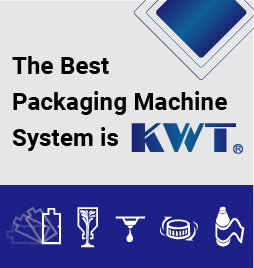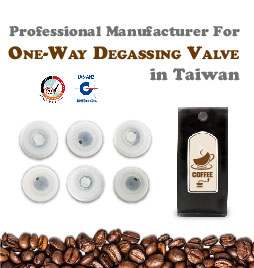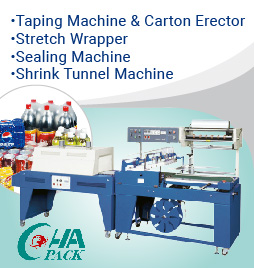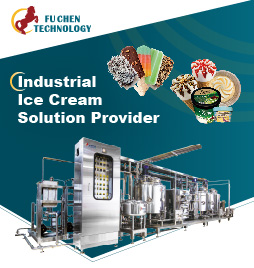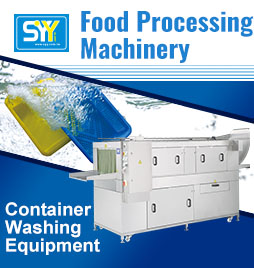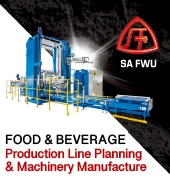PET Plastic In Food And Beverage Packaging Design

By M. Maritz , V. Eriksson and V. Barnes
Cape Peninsula University of Technology, South Africa
DOI: https://doi.org/10.1017/dsd.2020.83
|
Abstract This article draws inspiration from two concepts, which initially appear to be at odds with each other. The first refers to the impact that plastics use has had on the environment and human health, while the second explores the prevalence and continued increase in the use of plastic materials. The manufacturing of plastic packaging will be reviewed to identify appropriate intervention. This article focuses on the future development of PET packaging in South Africa, exploring current literature and legislation which aid in the holistic development of the plastic packaging value chain. |
1. Introduction
Over the last two decades, user behaviour has become an integral part of plastic packaging design. Initially, plastic packaging was invented as an affordable response to the consumer need for convenience (Macdonald and Vaughan, 2008, p.9). Since the start of the 21st century, the role of plastics has changed. Plastic packaging now must comply with three user categories: it needs to be eco-friendly, financially viable and socially appropriate. Regarding recycling, South Africa proves to be an interesting case study as its recycling system is in direct contrast with Europe. In 2018, South Africa ranked number 10 globally as one of the countries with the worst plastic waste management (d’Ambrières, 2019, p.15). Even though no developed countries are on this list (e.g. Europe), that same year, South Africa recycled 63% of all PET bottles whilst collecting and recycling 46.3% of all other plastic waste. South Africa recycled 15.2% more post-consumer plastic waste than Europe in 2018, making SA a world leader in mechanical recycling (Plastics SA, 2019). Another consideration is the availability of extensive research on plastic waste management in developing countries. According to the systematic literature review, there seems to be very little available literature on how developing countries manage their plastic waste. South Africa is one of the only developing countries with extensive research showing conclusive results. Plastic packaging is currently designed using a linear model, which is based on planned obsolescence (United Nations, 2018, p.9). Short product life cycles are causing plastic packaging to account for half of all plastic waste in the world (Schweitzer et al., 2018a, p.5). The design and manufacturing of plastic packaging must therefore be reviewed - to propose design changes focused on immediate impact - while longer term solutions are implemented (United Nations, 2018, p.6). Hammer and Pivo (2017, p.1) have argued that sustainable development cannot take place without recognising that current development patterns need to change. Carrying on with the same systems can jeopardise the environmental structure of both the planet and economy. For holistic development to take place, it is essential for designers to learn from previous generations (Hammer and Pivo, 2017, p.1). ‘Holistic’ here refers to the key players within the plastic packaging industry working together in order to create a sustainable future. The intention of this article is to highlight challenges and opportunities, through a systematic review of literature, as well as policy and reporting within the context of South Africa. The problems within the plastic packaging industry can only be addressed properly if all facets of the system are considered. This article will present the results from a review of current literature and data, which focuses on user behaviour, packaging design, system design and sustainable development. Although inspiration will be drawn from international studies and the global climate of user behaviour in packaging, the key focus will be on the South African industry.
2. Research approach
For this study, a systematic literature review was used to review current findings and discussions around PET plastic in the food and beverage industries, within the context of South Africa. A systematic literature review is useful when “a general overall picture of the evidence in a topic area is needed to direct future research efforts” (Petticrew and Roberts, 2008, p.21). By asking a specific question, or using a key phrase, the researcher can identify a body of knowledge to work with. A systematic review details all decisions used in compiling, including and excluding articles/ sources – this allows “the reader to gauge for him- or herself the quality of the review process and the potential for bias” (Garg et al., 2008, p.253). For the first analysis, the systematic literature review, the following range of keyword combinations were used when conducting searches: “South Africa and PET and packaging and food” and well as “South Africa and PET and packaging and beverage”. A range of electronic databases were searched (Table 1).
Table 1. Databases included in the literature search

The range of databases was extensive, as the range of fields which research PET is varied. As the study mainly focussed on current discussions and considerations, journal articles older than 2010 were not deemed appropriate. Additional inclusion criteria were that the final article was accessible in English and available as full text. Peer review was used as an exclusion criteria – this was because the peer review process is a generally accepted indicator of quality – although it is not always reliable. In fact, Jefferson, Wager and Davidoff suggest that it is near impossible to “estimate the effectiveness of the process”, and consequently make any improvements Jefferson et al. (2002, p.2789). The range of identified literature, and exclusions, are detailed in Table 2.
As the challenges and opportunities of the PET plastic in the food and beverage industries may also be captured directly by industry, a second phase of analysis was completed - using industry reports and publications issued by relevant organisations and industry watchdogs. The need to include industry findings and reports speaks to an integrated and holistic review of data available. The review of identified journal articles and industry findings are discussed in the context of international trends and findings (discussed as a systematic literature overview).
The plastic packaging industry is a vast field which is still being developed and so is the relevant legislation. In combination with academic literature, policy was reviewed to gain a holistic understanding of the context. When selecting applicable legislation and industry documents for this article, only the most current version of legislation and policies in South Africa were selected (currency was thus applied as the main selection criteria). All the international policies which are mentioned, have been used to influence South African policies, regarding the environment and plastic packaging. In 2016, South Africa signed the Paris agreement. The Paris agreement is a legally-binding framework set out by the United Nations. It is an internationally coordinated effort aimed at tackling climate change. Each country which signed the document is obligated to prepare, communicate and maintain successive nationally determined contributions (Adoption of the Paris Agreement, 2015).
Table 2. Identified literature and exclusions
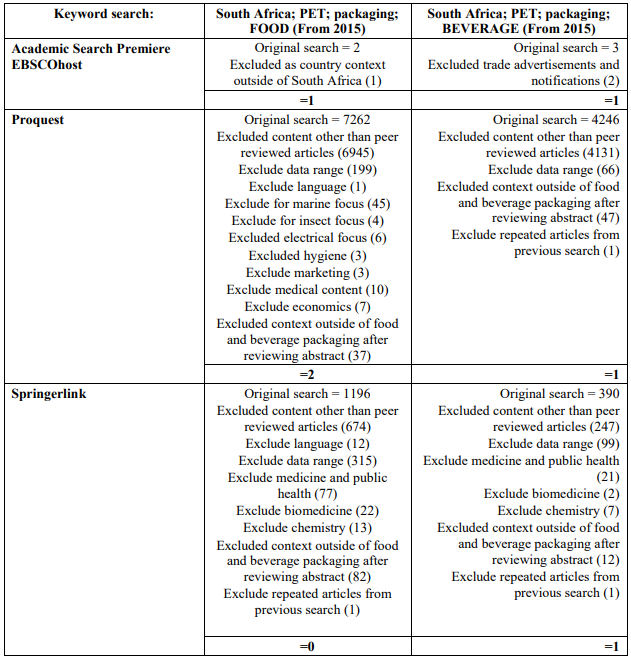
Plastics SA is the umbrella body which represents the entire value chain of the South African Plastics industry. On 12 August 2016, the South African Department of Environmental Affairs (DEA) published a call for Industry (Section 28) to create Waste Management Plans. This call was for all industries within Paper, Packaging, Electrical, Electronic Equipment and Lighting Industries. This call came under sections 28(1) and 28(5) of the National Environmental Management: Waste Act, 2008 (Act no.59 of 2008) (Department of Environmental Affairs, 2016). In response, Plastics SA published an Extended Producer Responsibility (EPR) Plan on 5 September 2018. The EPR plan promotes waste minimisation, re-use, recycling and recovery of all plastic waste (PETCO, 2016). This development plan is completely on par with the current goals of the Paris agreement, showing SA’s willingness and continuous research to move towards sustainable plastic packaging.
In July 2019, Plastics SA announced the formation of the South African Alliance. Its main goal is to End Plastic Pollution in the SA Environment. The South African Alliance is compiled of a group of plastics industry role players - that will collaborate on an initiative to ultimately end plastic pollution throughout the value chain. Their first priority is to find sustainable solutions to “single use” plastics. Their main goal is to increase the plastics recycling rate, and ultimately contribute to the National Development Plan (NDP) together with the objectives of the EPR plan (Plastics SA, 2019). The NDP was released by the South African Department of Social Development in 2015. The key objective of the NDP is to create an outline for industry in which people suffering from disabilities can contribute to the growth of South Africa’s economy, thus creating jobs. Through appropriate intervention and legislation, the NDP aims to: raise per capita income and increase the employment rate from 13 million in 2010 to 24 million in 2030 (Department of Social Development, 2015).
3. Literature overview: The challenge in context
Papanek’s 1974 book, Design for the Real World: Human Ecology and Social Change, the author discusses the designer’s obligation to society and the environment when designing (Papanek, 1995, p.265). Since the 1950’s, more than 42% of all plastics produced globally have been used for packaging (Schweitzer et al., 2018a, p.4). Currently plastic packaging (both rigid and flexible) accounts for one third of the total packaging industry (Foster, 2019). The design and manufacturing of plastic packaging must therefore be reviewed, to propose design changes focussed on immediate impact, while longer term solutions are implemented. It is essential for users to realise that plastic is a valuable resource that can be reused, instead of a disposable material (United Nations, 2018, p.6). The World Commission for the Environment and Development (1987, p.15) defines sustainable development as “…a morally defensible form of economic and social development that meets the needs of the present without compromising the ability of future generations to meet the needs of others”. The sustainable development of a product has implications for the entire value chain from cradle to grave (Lee and Xu, 2005, p.15).
The life cycle of food and beverage packaging has 5 stages namely: raw material production, fabrication of the packaging, distribution/transport, post-consumer disposal and recycling (Franklin Associates, 2014, p.5). Typically, only a few packaging and distribution methods are considered when doing a Life Cycle Analysis (LCA). Thus, the outcome provides a choice between ‘bad’ and ‘less bad’, irrespective of the implications (Schweitzer et al., 2018b, p.12). The global plastic packaging market will be worth $998 Billion by 2020, indicating 3.5% growth per annum (Foster, 2019). In South Africa alone, the informal job creation within the plastic packaging industry was estimated at 52 300 in 2017 (Hanekom, 2019). These statistics prove that the plastics industry plays an integral part in both the financial and social economy. In order to understand where the most waste takes place in the current system, all stages of plastic packaging needs to be analysed (Hanekom, 2019). This will aid in moving towards closed loop, carbon-neutral production cycles (United Nations, 2018, p.15).
With an active user involved, it is important to consider psychology. Gestalt psychology attempts to understand why and how certain user behaviours can be triggered through appropriate patterns and interventions (Wagemans et al., 2012, p.1219). Gestalt principles are applicable to user behavioural design, as gestalt shows the subconscious relationship between the consumer expectation and the designed product. Gestalt principles are based on the idea that the consumer will react to certain products or shapes based on previous experiences (Chang et al., 2002, p.6). Waste management within the packaging industry is based on the knowledge of the user. In a survey done by the UK based Which?, 94% of respondents agreed that the amount of plastic packaging should be reduced, 23% of respondents reiterated that they avoid buying products which they feel are ‘over-packaged’. Another survey by the Industry Council for Research on Packaging proved that 79% of consumers agree that plastic is malevolent and that the products are ‘over packaged’ (Schweitzer et al., 2018a, p.14). These studies prove that consumers believe plastic packaging is bad, without even considering factors like the implication other materials can have on the environment.
Currently, bioplastics are being investigated and tested - to find the best possible alternative for petroleum-based plastics (Risch, 2009, p.8091). In the sector of plastic packaging, it is integral for consumers to understand what they are buying and the implications thereof. The terms ‘biodegradable’ & ‘bio-based’ packaging is commonly mistaken for something that can break down naturally and quickly in the natural environment. The majority of biodegradable plastics only biodegrade under high temperatures at incineration plants (United Nations, 2018, p.8). This will allow uninformed consumers to discard ‘biodegradable’ packaging into the natural environment. There have been many alternatives to plastic suggested, but they also introduce a range of new consequences. Currently biodegradable plastics which show the best alternatives to synthetic based single-use plastic packaging include Polylactic Acid (PLA), Polyhydroxyalkanoates (PHA) and Thermoplastic Elastomers (TPS) (United Nations, 2018, p.15). Although they are great alternatives, they can only be recycled with industrial composting or anaerobic digestion facilities. This means PLA, PHA and TPS are only viable in a closed loop system where the packaging waste is well managed, otherwise they will end up in landfills and the natural environment (United Nations, 2018, p.15). These alternatives are only viable if they are managed correctly and if the correct infrastructure is available (Schweitzer et al., 2018a, p.10). Most current bioplastic packaging does not specify the biodegradability or compost-ability of the product. This may lead to uninformed consumers discarding packaging recklessly. These factors reinforce the importance for governments to apply strict labelling policies, to ensure that consumers are educated and informed (United Nations, 2018, p.8). It has been proved that plastic packaging increases shelf life of food, which can in turn reduce food waste. To name one example; it is estimated that the plastic around a cucumber increases its shelf life from 3 to 14 days (Sonesson et al., 2009, p.16). Although proving that plastic shrink wrap increases the shelf life of a product, this research makes no mention of consumer behaviour (Schweitzer et al., 2018a, p.16).
4. Results and discussion
Findings from the literature identified through the systematic review offered a limited view of the South African plastics industry. However, they clearly represent a shift in scientific, technical and design driven research towards environmentally-conscious solutions. Between 2000 and 2017, South Africa imported approximately 13.7 Mt of plastics which equated to about 11.6% of plastics consumption in Africa (Babayemi et al., 2019, p.10). Lightweight plastics - which find their way into bodies of water when disposed of in open dump sites - and PET bottles make up the largest percentage of marine litter (Babayemi et al., 2019, p.16). Ways in which PET can be improved, including for the food and beverage packaging, is constantly being researched. These alterations include the addition of thin films to the surface of a PET container (including diamond-like carbon) to increase the barrier performance in relation to gasses (Ray et al., 2017, p.63). The effect that such additions would have, both from a production perspective and from an environmental perspective is not addressed in the findings but does speak to a growing need to understand how PET packaging can be improved to support the life cycle of food and beverage packaging. These studies, in combination with studies exploring the maximum reduction of PET thickness, speak to a growing industry awareness of environmental concerns (Siracusa et al., 2014, p.152). These concerns must be balanced by the need for food to arrive at the point of consumption in a safe and wholesome state. This may include the effects of temperature and light fluctuation as a packaged item travels and is stored in a variety of environments (Aneck-Hahn et al., 2018, p.260). In South Africa, and also globally, PET water bottles offer convenience in a hot climate, and access to water when no other safe source is available. The same is true of other food and beverage packaging examples.
Besides only exploring the product itself, literature indicates a review of the production and usage ecosystems. More holistic methodologies are used, such as the Life Cycle Assessment (LCA) methodology, to understand the impact of how packaging was used: to review the production, use and impact thereof.
| For a better understanding of this, it is enough to observe, for instance, that: using low-thickness multilayer films and PET (Polyethylene Terephthalate) bottles, respectively for food and beverages packaging, allows for a reduction of the environmental cost due to the phases of transportation to the food production and packaging plant, handling and dismantling...(Siracusa et al., 2014, p.151) |
When the entire ecosystem is understood, the potential of product design interventions, technologies and new developments - in areas such as bio-based materials - becomes apparent. Even with plastics being more recyclable than ever, one cannot assume that consumers will recycle them. A lack of consumer knowledge and appropriate waste management systems, at local government level, impacts this. The South African government-implemented legislation to lessen the demand for plastic shopping bags, banning thicker bags and charging consumers for the thinner (polythene bags > 30 μm) options had the opposite effect. Instead of reducing the number of bags being used, consumers adjusted and accepted the cost with the demand for plastic steadily increasing in South Africa (Dikgang et al., 2012, quoted in Lam et al., 2018, p.345). In order to pursue sustainability within packaging design, alternative materials should be researched, awareness raised among consumers, plastic products must be properly labelled, and the design of packaging reviewed. The packaging of food and beverages must be considered as individual elements, and as a whole. This means that when one considers the environmental impact of a disposable water bottle, it is critical to analyse the labelling and the PET bottle itself, as well as the marketing strategies, trends and consumer behaviour associated with the life cycle of the product (Sherwood et al., 2017). Design interventions are needed to facilitate better experiences and infrastructure, which would allow the consumer to rethink the way they look at plastic packaging. A new holistic approach needs to be introduced, which encompasses ‘the issues not only of cost, shelf-life, safety and practicality, but also of environmental sustainability’ (Siracusa et al., 2014, p.152). Within South Africa, the plastics recycling industry is based on economic principles. This is in contrast with Europe, where recycling is based on environmental legislation which is enforced by the local government. South Africa relies on manual labour and waste picking, whereas in Europe, the entire system is automated (Plastics SA, 2018). The importance of creating sustainable recycling systems which are tailor-made for different countries are shown in Table 3 (Adapted from Plastics SA, 2019).
Table 3. Difference in SA and EU recycling climate
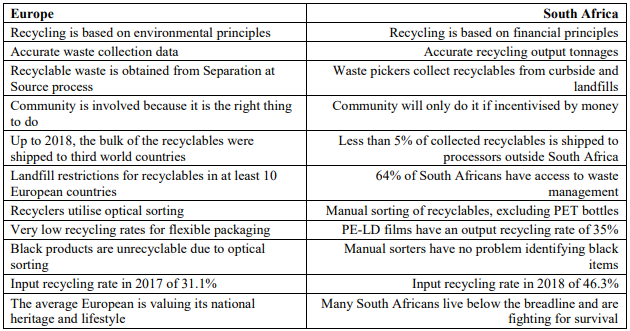
In Europe, the user interaction stops after the packaging has been discarded. The post-consumer waste is collected by formal waste management companies (United Nations, 2018, p.8). In South Africa, there are two user interaction phases; consumer and post-consumer interaction. The post-consumer interaction is defined by informal waste pickers and manual sorting centres. Waste pickers represent individuals who are unqualified or unable to find a job. This is where the NDP becomes applicable, the manual sorting and waste picking culture in SA, creates jobs for disabled people. Waste pickers represent the informal employment sector of SA. In 2017, 74% of all plastic materials that were recycled, originated from landfill and post-consumer sources (pickers). In 2017 +/-313780 tons of plastic were collected for recycling, in 2018 +/-519370 tons were collected and recycled. This indicates a growth of 6,7% from 2017-2018 (Plastics SA, 2019). Plastic recycling in SA is continually growing, and has significant financial gain for pickers, as can be seen in Figure 1 (Adapted from Plastics SA, 2019; Hanekom, 2019).
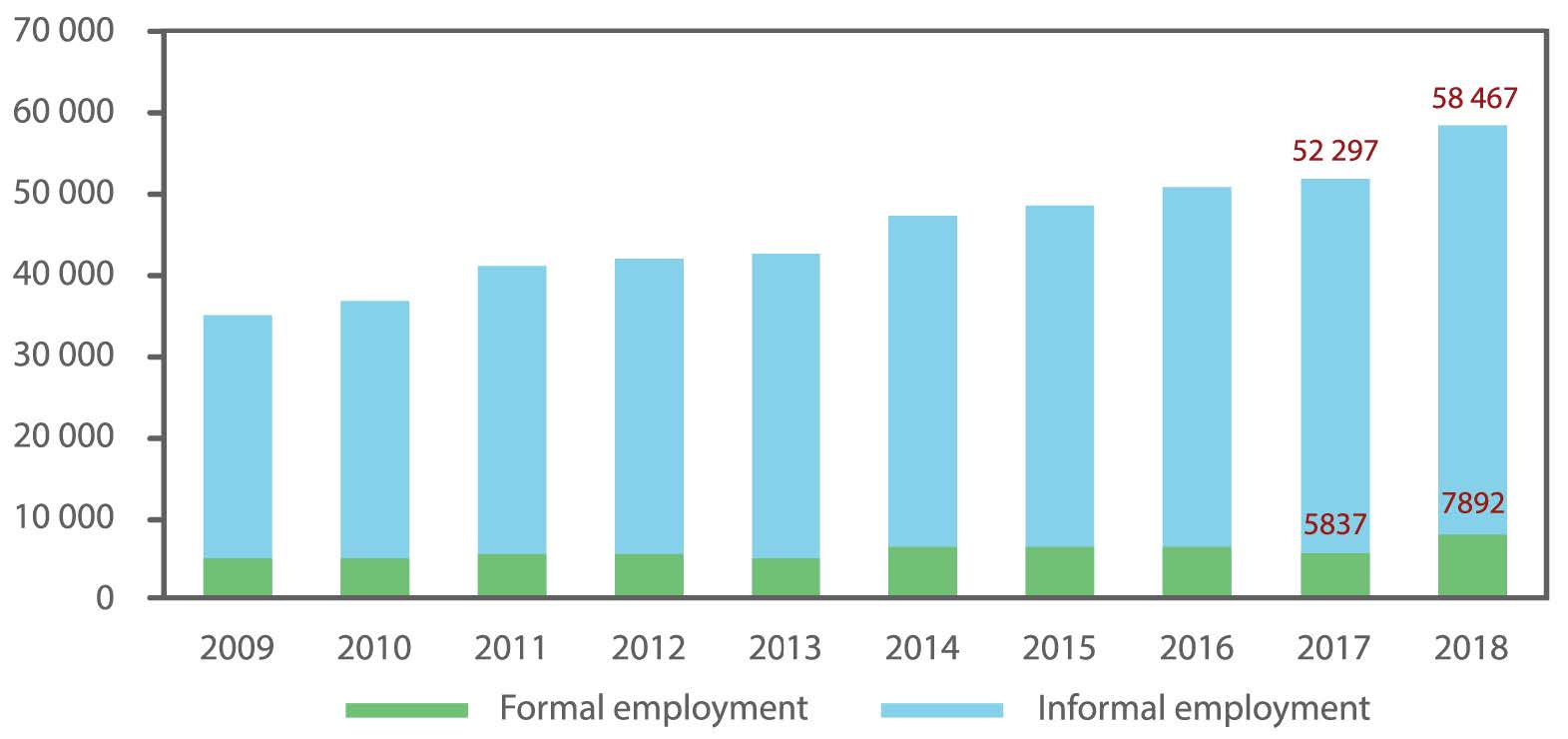
Figure 1.Formal & Informal employment in SA plastic packaging
An example of the importance of tailor making waste management systems according to specific regions or resources is black plastic containers. In 2015, one of Europe’s largest recycling companies Waste Management confirmed that their equipment generally cannot process black plastic due to equipment limitations. Black plastic is a favourite to use for many quick service restaurants (QSR), and as a result, this causes major concern (MacKerron, 2015, p.21). Whereas in SA, the waste picking culture (informal employment) creates the perfect solution as it can be easily sorted and recycled (Plastics SA, 2019). In the EPR plan published by Plastics SA, they emphasise the importance of the user factor within the plastic packaging economy by using the Ellen Macarthur Foundation Circular economy model. This model can be seen in Figure 2 (Adapted from Plastics SA, 2019; Ellen MacArthur Foundation, 2012, p.24).
Figure 2 divides the circular economy into three spheres: biosphere, human-sphere and technosphere. The Human-sphere is highlighted as being the most important aspect within the system, showing the importance of taking user behaviours into account when designing.
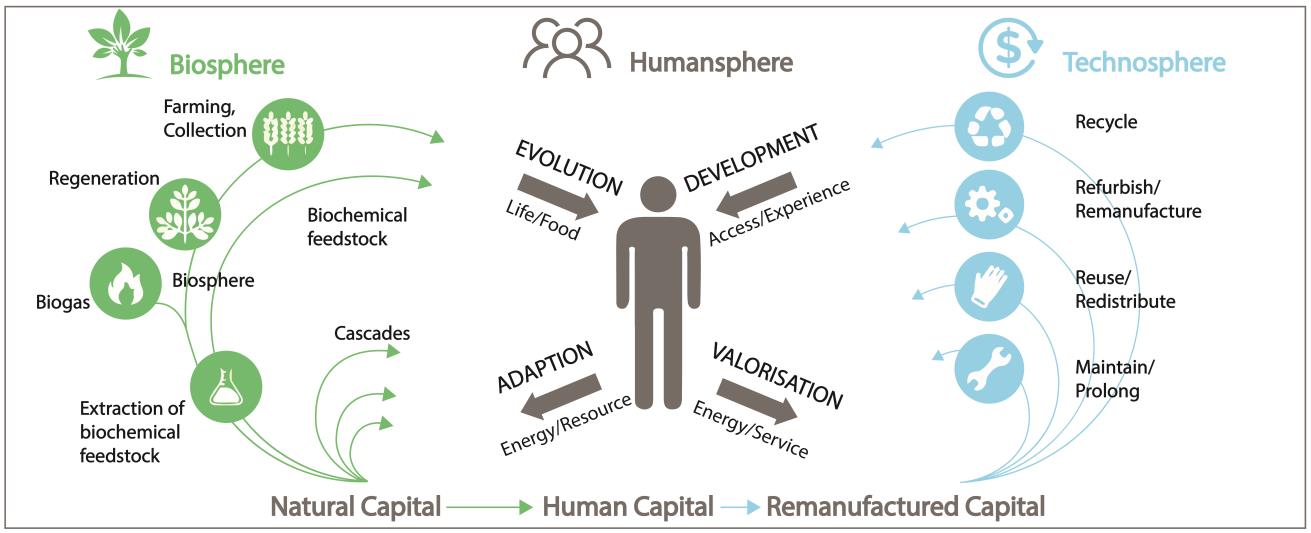
Figure 2.Circular economy model focused on user behaviour
5. Conclusion and outlook
Through doing a systematic literature and policy review, this article analysed the context of the South African PET packaging industry. Taking into consideration the global plastics climate, there is clear legislation and industry reports which prove that SA has pursued the global sustainability targets. Incorporating waste pickers into waste management and recycling programs is socially desirable, economically viable, and environmentally sound. Recommendations for the future development of PET plastic in the food and beverage industry are as follows:
1. Reconsider PET plastic production and design in a holistic manner.
2. Consider all facets of the system when designing PET packaging.
3. Utilise gestalt principles to understand the necessary intervention needed to show what can be achieved by users.
4. Combine expertise of different designers and exchange data, to develop sustainable products which cross disciplinary boundaries.
5. Study supporting alternative materials and create legislation that is enforced by the local government.
6. Develop opportunities for industry within local municipalities, according to their resources.
7. Create waste management systems which are designed to suit the needs of the user and environment.
8. Ensure governments enforce coherent system design at a local level.
These recommendations include all three user categories for plastic packaging: to be eco-friendly, financially viable and socially appropriate – thus suggesting new life cycle pathways for plastic packaging in the future.
References
Adoption of the Paris Agreement (2015), In: Framework convention on Climate Change. [online] United Nations, Paris. Available at: https://unfccc.int/resource/docs/2015/cop21/eng/l09r01.pdf (accessed 7.11.2019).
Aneck-Hahn, N.H. et al. (2018), “Estrogenic activity, selected plasticizers and potential health risks associated with bottled water in South Africa”, Journal of water and health, Vol. 16 No. 2, pp. 253-262. https://doi. org/10.2166/wh.2018.043
Babayemi, J.O. et al. (2019), “Ensuring sustainability in plastics use in Africa: consumption, waste generation, and projections”, Environmental Sciences Europe, Vol. 31 No. 1, p. 60. https://doi.org/10.1186/s12302-0190254-5
Chang, D., Dooley, L. and Tuovinen, J.E. (2002). Gestalt Theory in Visual Screen Design — A New look at an old subject. In: Not Set ed. Selected Papers from the 7th World Conference on Computers in Education (WCCE’01), Copenhagen, Computers in Education 2001: Australian Topics. Australian Computer Society, Melbourne, pp. 5-12.
d’Ambrières, W. (2019), “Plastics recycling worldwide: current overview and desirable changes”, The journal of field actions, Vol. 19, pp. 12-21.
Department of Environmental Affairs (2016), National Gazette no 40207, Volume 614, South African Govern -ment, p. 1. Available at: https://www.greengazette.co.za/notices/index-for-20160812-national-gazette-no-40207-of-12-august-2016-volume-614_20160812-GGN-40207.pdf [Accessed 7.11.2019].
Department of Social Development (2015), The National Development Plan 2030: Persons with disabilities as equal citizens, Department of Social Development, Pretoria, pp. 6-8.
Ellen MacArthur Foundation (2012), Towards the Circular Economy: Economic and Business Rationale for an Accelerated Transition. [online] Available: https://www.ellenmacarthurfoundation.org/assets/downloads/ publications/Ellen-MacArthur-Foundation-Towards-the-Circular-Economy-vol.1.pdf [Accessed 7.11.2019].
Foster, J. (2019), “International flexible packaging trends and sustainability”, Proceedings of the 2019 Propak Africa conference, Johannesburg, 12-15 March 2019.
Franklin Associates (2014), Impact of plastics packaging on life cycle energy consumption & greenhouse gas emissions in the United States and Canada – Substitution Analysis, pp. 5-16.
Garg, A.X., Hackam, D. and Tonelli, M. (2008), “Systematic Review and Meta-analysis: When One Study Is Just not Enough”, Clinical Journal of the American Society of Nephrology, Vol. 3, pp. 253-260. Online. https://doi.org/10.2215/CJN.01430307
Hammer, J. and Pivo, G. (2017), The Triple Bottom Line and Sustainable Economic Development Theory and Practice. University of Portland State & University of Arizona, Research Paper No. 1-12. Available at SAGEPUB: http://journals.sagepub.com/doi/10.1177/0891242416674808.
Hanekom, A. (2019), “Replacing plastic: blessing or curse?”, Proceedings of the 2019 Propak Africa conference, Johannesburg, 12-15 March 2019.
Jefferson, T., Wager, E. and Davidoff, F. (2002). Measuring the Quality of Editorial Peer Review. Journal of American Medical Association, Vol. 287 No. 21, pp. 2786-2790. [online]. https://doi.org/10.1001/jama. 287.21.2786
Lam, C.S. et al. (2018), A Comprehensive Analysis of Plastics and Microplastic Legislation Worldwide. Water, Air, & Soil Pollution, Vol. 229, No. 11, p. 345. https://doi.org/10.1007/s11270-018-4002-z
Lee, S.G. and Xu, X. (2005), “Design for the environment: life cycle assessment and sustainable packaging issues”, Int. J. Environmental Technology and Management, Vol. 5 No. 1, pp. 14-41. https://doi.org/ 10.1504/IJETM.2005.006505
Macdonald, A. and Vaughan, A. (2008), Fantastic Plastic. 1st ed. Gatsby Science Enhancement Programme, London. pp. 1-55. [online] https://www.stem.org.uk/system/files/elibrary-resources/legacy_files_migrated/ 12754-PLS_booklet.pdf
MacKerron, C. (2015), Waste and Opportunity 2015: Environmental Progress and Challenges in Food, Beverage, and Consumer Goods Packaging, Natural Resources Defense Council, pp. 4-58.
Packaging SA (2018), Packaging SA Extended Producer Responsibility plan – Volume 1, Packaging SA Extended Producer Responsibility plan, [online] Plastics SA, pp. 18-77. Available at: https://www.packagingsa.co.za/wp-content/uploads/2018/09/Packaging-SA-EPR-Plan-Volume-1.pdf [accessed 7.11.2019].
Papanek, V. (1995), Design for the real world: Human ecology and social change, Thames and Hudson, London, p. 38,256.
PETCO (2016). Minister calls for Industry Waste Management Plans – PETCO. [online] Available at: https://petco.co.za/section28/ [accessed 7.11.2019].
Petticrew, M. and Roberts, H. (2008), Systematic Reviews in The Social Sciences, John Wiley & Sons, Oxford. https://doi.org/10.1332/174426406778881728
Plastics SA (2018). 2017 Plastics Recycling figures released. [online] Available at: https://www.plasticsinfo. co.za/wp-content/uploads/2018/07/2017-PLASTICS-RECYCLING-FIGURES-RELEASED_FINAL.pdf [Accessed 1 Nov. 2019].
Plastics SA (2019). End Plastic Pollution – South African Alliance. [online] Available at: https://www. plasticsinfo.co.za/wp-content/uploads/2019/03/PLASTICS-SA-ANNOUNCES-POLLUTION-ALLIANCE_ FINAL-2019.pdf [Accessed 11 Nov. 2019].
Plastics SA. (2019). National plastics recycling survey 2018: Recycling is the realization of the plastics circular economy. [online] Available at: https://www.plasticsinfo.co.za/recycling/ [Accessed 1 Nov. 2019].
Ray, S.C. et al. (2017), “Functional diamond like carbon (DLC) coatings on polymer for improved gas barrier performance”, Diamond and Related Materials, Vol. 80, pp. 59-63. https://doi.org/10.1016/j.diamond. 2017.09.001
Risch, S. (2009), “Food Packaging History and Innovations”, Journal of Agricultural and food chemistry, Vol. 57 No. 18, pp. 8089-8091. https://doi.org/10.1021/jf900040r
Schweitzer, J. et al. (2018a), Unwrapped: how throwaway plastic is failing to solve Europe’s food waste problem (and what we need to do instead), Institute for European Environmental Policy (IEEP), Brussels, A study by Zero Waste Europe and Friends of the Earth Europe for the Rethink Plastic Alliance, pp. 1-22.
Schweitzer, J.P., Petsinaris, F. and Gionfra, C. (2018b), Justifying plastic pollution: how Life Cycle Assessments are misused in food packaging policy, Institute for European Environmental Policy (IEEP), Brussels. A study by Zero Waste Europe and Friends of the Earth Europe for the Rethink Plastic Alliance, pp. 3-16. https://doi.org/10.1016/j.ecolind.2018.12.018
Sherwood, J. et al. (2017), “Recirculation: A new concept to drive innovation in sustainable product design for bio-based products”, Molecules, Vol. 22 No. 1, p. 48. https://doi.org/10.3390/molecules22010048
Siracusa, V. et al. (2014), Environmental assessment of a multilayer polymer bag for food packaging and preservation: An LCA approach. Food Research International, Vol. 62, pp. 151-161. https://doi.org/ 10.1016/j.foodres.2014.02.010
Sonesson, U., Davis, J. and Ziegler, F. (2009), Food Production and Emissions of Greenhouse Gases. An overview of the climate impact of different product groups. Sweden: Swedish Institute for Food and Biotechnology, pp. 1-21. https://doi.org/10.1016/j.agee.2016.12.024
United Nations (2018), State of plastics: World Environment Day Outlook 2018 [online] United Nations, pp. 3-13. Available at: https://www.unenvironment.org/resources/report/state-plastics-world-environment-day-outlook-2018 [Accessed 25.2.2019].
Wagemans, J. et al. (2012), “A century of Gestalt psychology in visual perception: II. Conceptual and theoretical foundations”, Psychological Bulletin, Vol. 138 No. 6, pp. 1218-1252. https://doi.org/10.1037/a0029334


